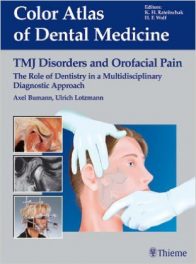Editors: Adam Brooks, Bryan A. Cotton, Nigel Tai and Peter F. Mahoney
Associate Editor: David J. Humes
Publisher: Wiley-Blackwell – 219 pages
Book Review by: Nano Khilnani
This book covers emergencies relating to the abdomen and veins and soft tissue infection; urologic problems and trauma pertaining to the abdomen, chest and veins; and critical-care issues and post-operative complications.
The book has four editors, an associate editor and 40 contributors who are specialists in various areas of medicine practicing in the United Kingdom and the United States.
The book has 30 chapters on various types of emergency surgery organized into groups and covered in seven parts.
Part 1 entitled Approach discusses preoperative considerations, the initial approach to the emergency surgery patient, emergency anesthesia and analgesia.
Part 2 named Abdomen is the largest one of the seven parts, having chapters 5 through 17. It covers problems and complications such as appendicitis (inflamed appendix), diverticulosis (inflamed diverticulum, part of the gastrointestinal or GI tract), bilary colic (pain in the bile ducts), acute cholecystitis (painful inflammation of the gall bladder), perforated peptic ulcer (breaks in membranes of the stomach wall or other organs such as he duodenum; and fulminant colitis or sudden and severe inflammation of the colon.
It also covers problems such as mesenteric ischemia (deficient blood supply to the mesentery, a part of the GI), bleeding and hemorrhage of the upper or lower GI tract; acute pancreatitis, obstruction in the small or large intestine; cholangitis or inflammation of one or more of the bile ducts, jaundice or a yellowing of the bile, and hernia, which is a protrusion of an organ or part through connective tissue or through a wall of the cavity in which it is normally enclosed. This is sometimes called a rupture.
Part 3 entitled Vascular has two chapters. One discusses surgery when there is a ruptured abdominal aortic aneurysm. This is a serious situation that requires immediate action to prevent tearing of a critical blood vessel. Aortic aneurysm occurs when there is a blood-filled balloon-like bulge of the aorta, the artery that carries blood from the left ventricle of the heart. If it bursts, death could result.
The other chapter in Part 3 is entitled Acute Limb Ischemia. Deficient supply of blood to the affected arm or leg limb can cause one or more of six problems for the patient: pain, pallor or a pale, bluish look; Perishing cold or pain from cramps; Paresthesia or numbness; paralysis or pulselessness. The surgeon has to do an exam and answer questions as to whether the limb is viable, threatened or unsalvageable before deciding his or her next course of action.
Part 4 entitled Soft Tissue Infection consists of a single chapter that covers three diseases: superficial sepsis (infection by bacteria or other organisms) cutaneous abscess (pus or a collection of white blood cells responding to an attack of harmful organisms into the body) and necrotizing fasciitis (flesh-eating disease caused by bacteria attacking the fascia or fibrous and connective tissue of muscles). The etiology (causation) of these diseases is presented, as well as the treatments, depending on the severity of each case.
Part 5 named Urology also has just one chapter that focuses on emergencies such as urolithiasis. Calcium stones account for about 80 percent of case in urolithiasis a condition wherein there is acute ureteric colic or severe pain caused by the formation of calculi, or calcium accretions commonly called stones. Medication is given to ease the pain in the loin area, and in severe cases such as an infected, obstructed kidney, surgery is done.
Part 6 named Trauma contains seven chapters that cover traumas relating to the chest and abdominal areas, and to blood vessels. Evaluations and decision-making as to the courses of action are discussed on abdominal, chest and vascular trauma situations respectively in chapters 22, 23 and 24.
This part also has a chapter entitled “damage-control surgery” which is a measure that was developed in 1983 when surgeons were doing a form of exploratory surgery called a laparotomy, which is an incision done on the abdominal wall to look into this area for problems.
In the course of their exploration, they discovered significant coagulopathy or the inability of blood to clot in the patient. The DC (damage control) approach is now well established. There are also two other chapters in Part 6 that look deeper into abdominal and thoracic traumas, particularly issues pertaining to their management.
Part 7 addresses issues pertaining to critical care of patients and postoperative complications that arise in some situations. Problems that related to breathing, blood circulation, disabilities (hypoglycemia, over-sedation, etc.) are discussed in this section.
The chapters in this book are very well organized for better absorption of the materials offered. Each one has a defined structure with introduction, clinical presentation (some with a clinical assessment), investigations, topics of discussion, summary and a suggested further reading list. Some include headings and discussions of post-operative management
The book is filled with numerous photos of surgical procedures, charts, CT scans, diagrams, graphs, tables and x-rays. All these supplemental aids make for easier learning of the subjects presented. There’s an eight-page index for those who want to quickly get to any topic and read up on it anytime to get themselves better equipped to learn, to diagnose, to make decisions on what to do and to act on the problem or situation at hand after their decision has been made.
This book is a down-to-earth guide that provides examination of the issues in each particular surgical situation and helps concerned people understand it clearly. It helps doctors examine, assess and investigate the problems their patients pose to them, and empowers them to manage their patients competently and with confidence.
The editors have done a marvelous job – this is a very useful book not only for various medical specialists and surgeons, but also for medical students, residents, surgical trainees and others intending to specialize in the types of surgeries covered in this book.






